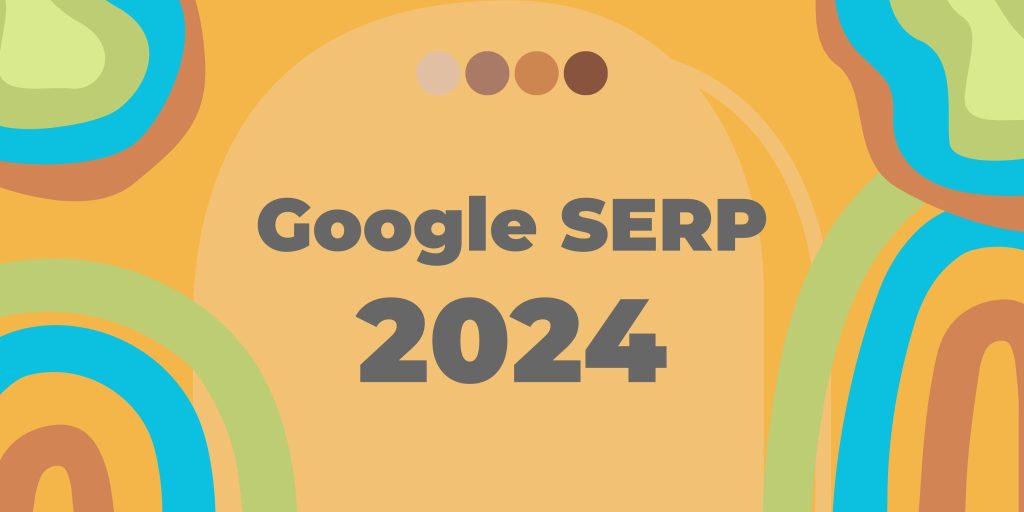Welcome to Week Studio-SEO Web tools the dynamic world of Google SERP – the digital gateway that shapes the online visibility of every website. In the fast-paced arena of the internet, understanding Google’s Search Engine Results Page is not just beneficial; it’s indispensable for anyone seeking an online presence. In this article, we’ll unravel the intricacies of Google SERP, exploring its various facets, from organic results to paid advertisements, and delving into the strategies that can catapult your website to the top.
As the heartbeat of online searches, Google SERP dictates the success or obscurity of digital entities. For businesses, bloggers, and website owners, comprehending the nuances of SERP is akin to holding the keys to the kingdom of online visibility. So, let’s embark on a journey to demystify Google SERP and discover how it can be harnessed for maximum impact in the realm of Search Engine Optimization (SEO). Get ready to unlock the secrets that lie behind the search bar and propel your online presence to new heights.
What is Google SERP?

At the core of every online search lies the Google SERP – a multifaceted landscape that determines the fate of websites in the digital realm. SERP, an acronym for Search Engine Results Page, is the interface users encounter after entering a query into the Google search bar. It is the virtual battlefield where websites contend for visibility, striving to secure a coveted spot on the first page.
Definition and Significance
Google SERP is essentially the compilation of results that Google deems most relevant to a user’s query. It showcases a mix of organic results, paid advertisements, and various features tailored to provide users with the most pertinent information swiftly. Understanding SERP is pivotal because it directly influences a website’s traffic, user engagement, and overall success in the competitive online landscape.
Components of a Typical SERP
A typical SERP comprises several key components, each serving a unique purpose:
- • Organic Results: These are non-paid listings that Google’s algorithm deems most relevant to the user’s query.
- • Paid Results (Google Ads): Sponsored listings that appear at the top and bottom of the SERP, marked as ads.
- • Featured Snippets: Quick answers displayed at the top of the SERP, providing concise information extracted from relevant web pages.
- • Local Pack: For location-based queries, a map with local businesses and a list of organic results known as the local pack is displayed.
- • Knowledge Graph: A box containing essential information about entities, sourced from reputable databases.
- • SERP Features: Rich results, carousels, and other special features designed to enhance user experience.
Understanding these components is the first step in navigating the intricacies of Google SERP and optimizing your online presence for maximum visibility. In the next sections, we’ll delve deeper into each aspect to uncover the strategies that can propel your website to the forefront of the digital landscape. Get ready to explore the secrets of organic results, paid advertising, and the myriad features that constitute the dynamic world of Google SERP.
Understanding Organic Results

In the intricate tapestry of Google SERP, organic results stand as the backbone of user-driven discovery. These are the listings that Google’s algorithm, through a complex set of criteria, deems most relevant and credible in response to a user’s search query. Understanding the dynamics of organic results is crucial for anyone aiming to ascend the ranks of the digital domain.
How Google Ranks Organic Search Results?

Google’s ranking algorithm is a closely guarded secret, but several factors contribute to the positioning of organic results:
- 1. Relevance: The content’s relevance to the user’s query is paramount. Google assesses how well a page’s content aligns with the search intent.
- 2. Quality of Content: High-quality, informative, and well-structured content is more likely to secure a favorable position in organic results.
- 3. Page Authority: Websites with a strong authority, often measured by the number and quality of backlinks, are deemed more trustworthy and rank higher.
- 4. User Experience: Factors like page load speed, mobile-friendliness, and overall user experience contribute to organic ranking.
Importance of Organic Ranking for Website Visibility
While paid advertisements can quickly boost visibility, organic results provide sustainable, long-term benefits. Users tend to trust organic listings more, perceiving them as earned placements rather than paid promotions. Securing a prominent position in organic results is a testament to a website’s credibility and relevance within its niche.
To optimize for organic results, focus on creating valuable, user-centric content, employing ethical SEO practices, and cultivating a robust online presence. As we unravel the layers of Google SERP, remember that mastering the art of organic visibility is akin to establishing a solid foundation for your digital success. Now, let’s explore the realm of paid results and how businesses strategically leverage Google Ads to enhance their online presence.
Paid Results: Demystifying Google Ads

In the bustling landscape of Google SERP, paid results, often powered by Google Ads, constitute a prominent facet of the digital marketing strategy. These are the sponsored listings that appear prominently at the top and bottom of the SERP, distinguished by an “Ad” label. Demystifying Google Ads is essential for businesses seeking targeted visibility and a rapid route to potential customers.
Explanation of Paid Advertisements on SERP
Google Ads, formerly known as Google AdWords, is a powerful advertising platform that allows businesses to display their ads on the SERP. Unlike organic results, these placements are secured through a bidding system, where advertisers bid on keywords relevant to their products or services.
Benefits of Using Google Ads for Businesses
- 1. Immediate Visibility: Google Ads provide instant visibility, ensuring that your ad appears prominently for relevant searches from the moment the campaign goes live.
- 2. Targeted Advertising: Advertisers can precisely target their audience based on demographics, location, interests, and search behavior, ensuring that their message reaches the right people.
- 3. Measurable Results: Google Ads offers detailed analytics, allowing businesses to track the performance of their ads in real-time. This data helps in refining campaigns for optimal results.
- 4. Flexible Budgeting: Advertisers have control over their budget, allowing them to set daily or campaign-specific spending limits. This flexibility is especially beneficial for small businesses with varying advertising budgets.
Understanding the intricacies of Google Ads, including ad formats, bidding strategies, and ad extensions, empowers businesses to craft effective campaigns that resonate with their target audience. As we delve deeper into the layers of Google SERP, the spotlight now turns to featured snippets – the succinct nuggets of information that often provide quick answers to user queries. Join us as we explore strategies to optimize content for these coveted positions and enhance your website’s visibility in the digital arena.
Featured Snippets: The Quick Answers

In the ever-evolving landscape of Google SERP, featured snippets have emerged as the quick answers that users crave. These concise, information-packed snippets are displayed prominently at the top of the search results, providing users with immediate answers to their queries. Understanding and optimizing for featured snippets is a strategic move for any website aiming to capture the attention of today’s information-hungry audience.
Definition and Examples of Featured Snippets

Featured snippets, also known as “position zero,” are selected search results that appear in a box at the top of the SERP. They aim to provide users with a brief, direct answer to their query without requiring them to click through to a specific website. Featured snippets come in various forms:
1. Paragraph Snippet: A concise paragraph that directly answers the user’s question.
Example:
> *Question: “How does photosynthesis work?”*
> *Snippet: “Photosynthesis is the process by which plants, algae, and some bacteria convert light energy into chemical energy to fuel their growth.”*
2. List Snippet: A bulleted or numbered list that outlines steps, items, or details.
Example:
> *Question: “Benefits of regular exercise”*
> *Snippet: “The benefits of regular exercise include improved cardiovascular health, weight management, enhanced mood, and increased energy levels.”*
3. Table Snippet: Information presented in a tabular format for easy comprehension.
Example:
> *Question: “Nutritional content of fruits”*
> *Snippet: A table displaying the calories, vitamins, and other nutritional details for various fruits.*
Strategies to Optimize Content for Featured Snippets

To secure a coveted spot in the featured snippet, consider these strategies:
- 1. Provide Clear Answers: Craft content that succinctly answers common user queries. Use clear language and concise explanations.
- 2. Structured Format: Use headers, lists, and tables to structure content logically, making it easier for search engines to extract relevant information.
- 3. Answer Frequently Asked Questions: Anticipate user queries and create content that addresses commonly asked questions within your niche.
- 4. Long-Tail Keywords: Incorporate long-tail keywords that mimic natural language, as featured snippets often respond well to conversational queries.
Optimizing for featured snippets not only elevates your content’s visibility but also positions your website as an authoritative source of information. As we navigate the diverse elements of Google SERP.
Local Pack and Map Results

In the digital landscape, the importance of local search results cannot be overstated, especially for businesses catering to a specific geographic area. Enter the local pack and map results – a dynamic duo that plays a pivotal role in connecting local businesses with their target audience on Google SERP.
Introduction to Local Search Results
Local search results are tailored to provide users with information relevant to their location. When users search for services or products with a local intent, Google often displays a local pack – a collection of businesses, along with map results, prominently on the SERP.
Tips for Local Businesses to Enhance Visibility on SERP
- 1. Google My Business Optimization:
– Claim and verify your Google My Business (GMB) listing.
– Ensure accurate business information, including name, address, phone number, and business hours.
– Add high-quality images showcasing your business. - 2. Cultivate Online Reviews:
– Encourage satisfied customers to leave reviews on your GMB profile.
– Respond promptly to reviews, demonstrating engagement with your customer base. - 3. Local Keyword Optimization:
– Incorporate location-specific keywords naturally into your website content.
– Ensure your website includes location information in meta tags and headers. - 4. NAP Citations:
– Consistency is key for your business’s Name, Address, and Phone Number (NAP) across online directories.
– Ensure NAP details align with your GMB listing. - 5. Localized Content Marketing:
– Create content that resonates with your local audience.
– Feature local events, news, or collaborations on your website. - 6. Mobile Optimization:
– Optimize your website for mobile users, as local searches often occur on mobile devices.
Understanding the dynamics of local search results empowers businesses to capitalize on their proximity to potential customers. As we traverse the diverse terrains of Google SERP, the spotlight now turns to the Knowledge Graph – a feature that goes beyond traditional results, presenting information in a visually appealing and informative manner. Join us as we unravel the intricacies of Knowledge Graph and explore its impact on SERP visibility.
Knowledge Graph: Beyond Traditional Results
Dive into the next layer of Google SERP sophistication – the Knowledge Graph. Beyond traditional results, the Knowledge Graph is a dynamic feature that transforms the way users interact with information, offering a visually engaging and context-rich experience.
Explanation of Knowledge Graph
The Knowledge Graph is a vast database of interconnected information, aiming to enhance user experience by providing immediate, concise, and relevant details about entities. When users search for well-known people, places, or things, the Knowledge Graph may present a panel on the right side of the SERP, offering a snapshot of essential information.
How Entities and Structured Data Impact SERP Appearance?

- 1. Entities in the Knowledge Graph:
– Entities refer to specific individuals, places, or things with unique characteristics. The Knowledge Graph connects these entities to provide a comprehensive understanding of a particular topic. - 2. Structured Data Markup:
– Structured data markup helps search engines understand the content on a webpage better. Implementing structured data can enhance the chances of your content appearing in the Knowledge Graph.
Strategies for Optimization:
- 1. Claim Your Entity: – If you represent an entity (a person, business, or organization), claim and verify your information through Google My Business or other relevant platforms.
- 2. Implement Structured Data: – Incorporate schema markup on your website to provide search engines with structured information about your content.
- 3. Quality Content Creation: – Develop high-quality, informative content that establishes your entity’s authority within its niche.
- 4. Visual Appeal: – Include visually appealing elements such as images, infographics, or charts to enhance the visual presentation of your content.
Understanding the intricacies of the Knowledge Graph is vital for businesses and individuals aiming to solidify their online presence. As we navigate the diverse features of Google SERP, our journey now ventures into the realm of SERP Features – rich results, carousels, and other elements that elevate the user experience. Join us as we unravel the significance of these features and explore strategies to gain eligibility for the coveted positions they offer.
SERP Features: Rich Results and More
As users traverse the Google SERP, they encounter a myriad of features that go beyond traditional listings. From rich results to carousels and knowledge panels, these SERP features enhance the search experience by providing diverse and interactive content.
Overview of SERP Features:
- 1. Rich Results: Rich results are enhanced search results that may include additional information like images, ratings, and snippets. They stand out visually, capturing users’ attention.
- 2. Carousels: Carousels display a set of related results in a horizontal scrollable format. Commonly seen for topics like recipes, movies, or events, carousels allow users to explore a variety of options.
- 3. Knowledge Panels: Knowledge panels, generated from the Knowledge Graph, present concise information about entities on the right side of the SERP. They offer a snapshot of key details without the need to click through.
- 4. Featured Snippets (Revisited): Featured snippets, previously discussed, are concise answers displayed at the top of the SERP in response to specific user queries.
Strategies for Gaining Eligibility for Rich Results
- 1. Structured Data Markup: Implement structured data on your website using schema markup. This provides search engines with additional context about your content, increasing the likelihood of rich results.
- 2. Optimize for Google My Business: For local businesses, optimizing your Google My Business profile enhances the chances of appearing in local packs and other rich results.
- 3. Create Comprehensive Content: Develop comprehensive content that addresses specific user queries. Google is more likely to feature content that provides value and addresses a user’s needs.
- 4. Leverage Visual Content: Include high-quality images, videos, and other visual elements in your content. Visual appeal can contribute to eligibility for rich results.
As we journey through the layers of Google SERP, our focus now shifts to the mobile landscape – an increasingly vital aspect of online searches. Join us as we explore the differences between desktop and mobile SERP, understanding the importance of mobile optimization in the ever-evolving world of digital interactions.
Mobile SERP: Navigating the Mobile Landscape

In a world where smartphones are ubiquitous, understanding the nuances of Mobile SERP is paramount for anyone seeking a successful online presence. Navigating the mobile landscape requires a distinct approach, considering the differences between desktop and mobile search experiences.
Differences Between Desktop and Mobile SERP:
- 1. Screen Real Estate: Mobile screens have limited real estate compared to desktops. As a result, the presentation of search results is more concise and prioritized on mobile.
- 2. User Interaction: Mobile users often engage differently, with touch gestures replacing traditional clicks. This influences the design and functionality of mobile SERP elements.
- 3. Local Emphasis: Mobile searches often have a strong local intent. Google responds by emphasizing local results, such as the local pack, to cater to users on the go.
- 4. Voice Search: With the rise of voice-activated assistants, mobile users frequently utilize voice search, impacting the nature of search queries and results.
Importance of Mobile Optimization for SEO:
- 1. Responsive Design: Ensure your website is responsive, adapting seamlessly to various screen sizes. Google prioritizes mobile-friendly websites in mobile search results.
- 2. Page Load Speed: Mobile users value speed. Optimize your website’s load time to provide a smooth and efficient user experience.
- 3. Mobile-Friendly Content: Craft content that is easily digestible on smaller screens. Break up text, use concise headings, and prioritize visual elements.
- 4. Local SEO for Mobile: If applicable, focus on local SEO strategies to enhance visibility in local mobile searches.
Understanding the mobile landscape is not just about adapting to smaller screens but also about catering to the distinct behaviors and expectations of mobile users. As we proceed through the layers of Google SERP, our focus now turns to the critical connection between SERP and user intent. Join us as we unravel the intricate dance between user intent and SERP, exploring how aligning content with user needs can lead to enhanced visibility and user satisfaction.
SERP and User Intent: The Connection
In the ever-evolving dance of Google SERP, understanding and aligning with user intent is the key to unlocking the door to sustained online success. The connection between SERP and user intent shapes the user experience, emphasizing the importance of delivering content that precisely meets the needs and expectations of searchers.
Understanding User Intent and Its Role in SERP
- 1. Informational Intent: Users seeking information or answers to specific questions. SERP responds with featured snippets, knowledge panels, and concise information-rich results.
- 2. Navigational Intent:
- – Users looking for a specific website or page. SERP presents direct links to the desired destination, often prioritizing the official website.
- 3. Transactional Intent: Users with the intention to make a purchase or engage in a specific online transaction. SERP may feature paid ads, product listings, and e-commerce results.
- 4. Local Intent: Users looking for nearby businesses or services. SERP responds with the local pack, map results, and information relevant to the user’s geographic location.
How to Align Content with User Intent for Better Rankings:
- 1. Keyword Research: Conduct thorough keyword research to understand the language users use when expressing their intent. Use these keywords strategically in your content.
- 2. Create Comprehensive Content: Craft content that comprehensively addresses the user’s query. Anticipate follow-up questions and provide valuable insights.
- 3. User-Friendly Format: Format your content in a user-friendly manner. Use headings, bullet points, and visuals to enhance readability and engagement.
- 4. Optimize for Various Intent Types: Depending on your business or content type, optimize for informational, navigational, transactional, or local intent.
Understanding the diverse facets of user intent enables content creators to tailor their approach, creating content that not only ranks well on SERP but also resonates with the specific needs of their target audience. As we delve deeper into the intricate world of Google SERP, the spotlight now turns to the critical factors that influence website rankings – the SEO game. Join us as we uncover the key ranking factors and explore strategies for improving website visibility in the highly competitive digital landscape.
Ranking Factors: The SEO Game
In the ever-evolving landscape of Google SERP, the SEO game plays a central role in determining the visibility and success of a website. Understanding the key ranking factors is essential for anyone aiming to ascend the ranks of search engine results and attract valuable organic traffic.
Overview of Key Ranking Factors in Google SERP:
- 1. Content Quality: High-quality, relevant, and valuable content is fundamental to SEO success. Google prioritizes content that addresses user intent and provides a comprehensive answer to queries.
- 2. Backlinks: The quantity and quality of backlinks to your website impact its authority in the eyes of search engines. Focus on acquiring authoritative and relevant backlinks to boost your site’s credibility.
- 3. Page Load Speed: Google values user experience, and page load speed is a crucial factor. Optimize your website for quick loading to enhance user satisfaction and improve search rankings.
- 4. Mobile-Friendliness: With the rise of mobile searches, mobile-friendliness is a significant ranking factor. Ensure your website is responsive and provides an optimal experience on various devices.
- 5. User Experience (UX): A positive user experience, including intuitive navigation, clear calls-to-action, and a well-designed layout, contributes to higher rankings.
- 6. Technical SEO: Technical aspects such as site structure, URL structure, and proper use of headers contribute to a website’s overall SEO health.
- 7. Social Signals: While not a direct ranking factor, social signals (engagement on social media platforms) can indirectly impact visibility and traffic.
Tips for Improving Website Ranking Through SEO Efforts
- 1. Keyword Optimization: Conduct thorough keyword research and strategically incorporate keywords into your content, meta tags, and headers.
- 2. Regular Content Updates: Keep your content fresh and updated. Regularly publish new, relevant content to signal to search engines that your website is active and authoritative.
- 3. Local SEO Strategies: For businesses with a local presence, optimize for local searches. This includes claiming your Google My Business listing and ensuring accurate business information.
- 4. Monitor Analytics: Use analytics tools to track the performance of your website. Analyze user behavior, identify high-performing content, and make data-driven decisions.
- 5. Comprehensive SEO Audit: Periodically conduct a thorough SEO audit to identify areas for improvement. Address issues such as broken links, crawl errors, and duplicate content.
Mastering the SEO game requires a holistic approach that considers various factors influencing search engine rankings. As we progress through the layers of Google SERP, our attention now shifts to the evolving nature of the SERP itself. Join us as we explore recent changes in SERP layout and features, and discover how businesses can adapt to stay competitive in this dynamic digital environment.
Conclusion
In the intricate tapestry of Google SERP, navigating the diverse layers is both an art and a science. From understanding the basics of organic results to decoding the nuances of featured snippets, local packs, and the evolving landscape, the journey through the digital realm is ever-illuminating. As businesses and content creators strive for online visibility, the importance of aligning with user intent, optimizing for diverse SERP features, and mastering the SEO game cannot be overstated. The dynamic nature of Google’s algorithms and the continuous evolution of SERP features necessitate a flexible and adaptive approach.
Remember, the key to success lies not only in mastering the technical aspects of SEO but also in crafting content that resonates with the needs and expectations of your audience. Google SERP is, at its core, a user-centric platform, and providing value to users should be at the forefront of every digital strategy.
In this ever-evolving landscape, stay informed, stay adaptable, and stay focused on delivering exceptional user experiences. The journey through Google SERP is not a one-time exploration but an ongoing expedition into the ever-expanding frontiers of digital discovery. Now armed with insights into the intricacies of Google SERP, go forth and optimize. Elevate your online presence, connect with your audience, and embark on a journey of digital success in the dynamic world of search engine results.
FAQs About Google SERP
- 1. What is Google SERP?
- – Answer: Google SERP, or Search Engine Results Page, is the page displayed by Google in response to a user’s search query. It includes a mix of organic results, paid advertisements, and various features like featured snippets and knowledge panels.
- 2. How Does Google Rank Organic Search Results?
- – Answer: Google uses a complex algorithm that considers factors such as relevance, content quality, backlinks, user experience, and more to determine the ranking of organic search results.
- 3. What Are Featured Snippets?
- – Answer: Featured snippets are concise, information-packed snippets that appear at the top of the SERP, providing quick answers to user queries. They are extracted from relevant web pages.
- 4. How Can Businesses Optimize for Local Search Results?
- – Answer: Businesses can optimize for local results by claiming and optimizing their Google My Business listing, cultivating positive online reviews, incorporating local keywords, and ensuring consistent NAP (Name, Address, Phone Number) information.
- 5. What Are Knowledge Graph and Knowledge Panels?
- – Answer: The Knowledge Graph is a database that connects entities and provides comprehensive information. Knowledge panels, generated from the Knowledge Graph, appear on the right side of the SERP and offer a snapshot of key details about entities.
- 6. What Are Rich Results on Google SERP?
- – Answer: Rich results are enhanced search results that may include additional information such as images, ratings, and snippets. They aim to provide a more visually appealing and informative user experience.
- 7. How Does Mobile SERP Differ from Desktop SERP?
- – Answer: Mobile SERP is designed to cater to the specific needs of users on mobile devices. It often features a more concise presentation, emphasizes local results, and considers factors like touch gestures and voice search.
- 8. What Are the Key Ranking Factors in Google SERP?
- – Answer: Key ranking factors include content quality, backlinks, page load speed, mobile-friendliness, user experience, and social signals. These factors collectively influence a website’s position in search results.
- 9. How Does User Intent Affect SERP Results?
- – Answer: User intent influences the type of search results displayed. Google aims to provide results that align with the user’s intent, whether it’s informational, navigational, transactional, or local.
- 10. How Can Businesses Adapt to Recent Changes in Google SERP?
- – Answer: Businesses can adapt by staying informed about algorithm updates, optimizing for new features like video carousels, prioritizing user experience, and continually refining their SEO strategy based on evolving trends.
These FAQs aim to provide clarity on various aspects of Google SERP, empowering businesses and individuals to navigate the dynamic digital landscape with confidence.
